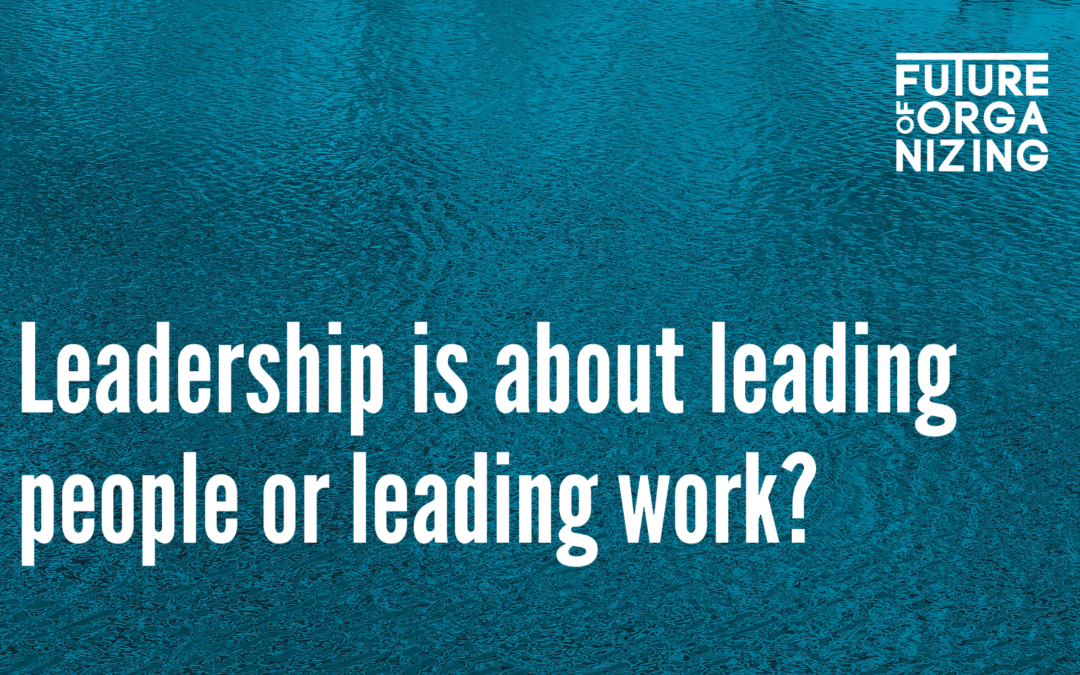The number of posts, articles, training programs, and discussions about leadership is enormous. We can point out that there are many prefixes and superlative of leadership: transformational, transactional, servant, situational, coach-style, emotional, democratic, autocratic, strategic, bureaucratic, Laissez-faire, affiliative, delegative and more. In addition, several other prefixes such as self-leadership have also become popular in order to distribute the concept to all people in the organization. However, we believe that leading is not about work but leading people.
We see also that conversations about leadership are taking place everywhere and it seems difficult to get a common agreement about what type of leadership is the “correct” one.
What is leadership then? The answer will depend in who we ask and on # theory we read. We have come across almost 70 different definitions of leadership.
One of the definitions that has been spread during the last decade comes from Peter Northouse (2007), who states that leadership is a process through which a person influences a group of individuals to achieve a common goal. We consider that there is a limitation in saying “common goal” and “group of individuals” because it can be about a goal that a single person has or that only part of the group has and is not “common” for the whole group. Our interpretation of the reason for this limitation is that leadership have been historically defined in a hierarchical view, where a leader leads a group of people towards an achievement, it does not say how the influence is. It could be by fear, by belonging, or something else.
Therefore, we think that Bruzelius and Skärvad’s definition is more useful because they define leadership as: an influencing process with the aim of getting other people to act voluntarily and committedly to achieve certain goals (2004, p. 365, freely translated). This definition is more appropriate because it addresses two important aspects that are voluntariness and commitment. It can also apply to just leading one person to archive an individual goal, e.g., leading oneself.
To answer the question about if leadership is about leading people or about leading work, we reflect on many of the dialogs that we have with leaders. When we ask about their job the majority of the leaders seem to expend their time in clarifying, distributing and following up on tasks, budgets or plans. This is pretty much managing work; it does not have much to do with leading people.
It is time that leaders start leading people and let the people working with the tasks, to lead the tasks! To do that, leaders need series of skills like authenticity, adaptability, and empathy. They also need to trust the ability of the people and let them take ownership of their tasks. Trust and an environment where people feel safe, leads to creativity, innovation, and ownership. People will also be more committed to learn new things and develop their abilities.
It is time to reinvent leadership by distributing the power to the people doing the job, they are capable to make decisions, perform their tasks, and adapt way of working to the situation.
After three years of conducting a study that included more than 100 organisations and 300 interviews with the aim to find evidence and practices about new ways of organizing to lead people and that lead to good results, we ended with a model called DP (distributed power). The model is to be used as a guide in a cultural journey towards self-organizing, TEAL, and modern organizing. It is a systemic model and is constituted of twelve areas. These areas are People, Culture, Organization, Leadership, Decision making, Transparency and communication, Salary model and profit sharing, Digitization and technology, Competence and learning, Workplace and working hours, Social responsibility and sustainability, and Finances.
The model can also be used to map the current state for each one of the areas. And is to be considered as guide to implement the thoughts that Frederic Laloux presented on his book “Reinventing organizations”.
The DP-Model as well as several cases and pitfalls are presented in the book Teal.Tlillit.Transparens (Teal.Trust.Transparency), currently (2023) on the process of being translated to English.
More information about the DP-model: www.futureoforganizing.se and the book, click here.
Alicia Medina, Phd and Rolf Medina, Phd
With extensive experience in leadership development, organizational change, and the design and implementation of innovative management practices.
Authors of the book “Teal. Trust. Transparency.: A New Way to Organize and Lead,” which explores the concept of “teal organizations” and how they can be designed to promote a culture of trust, transparency, and collaboration.
In addition, frequent speakers and commentators on topics related to organizational culture, leadership, and innovation, and have been recognized as some of Sweden’s most influential management thinkers.
(source: ChatGPT)
Future of Organizing AB
www.futureoforganizing.se
References:
Northouse, P.G. (2007) Leadership: Theory and Practice. 4th Edition, Sage, Thousand Oaks
Bruzelius, L. H. & Skärvad, P-H. (2004). Integrerad organisationslära. 9:7 uppl. Lund: Studentlitteratur.
Laloux, F. (2014). Reinventing Organizations: A Guide to Creating Organizations Inspired by the Next Stage of Human Consciousness. Brussels: Nelson Parker
Medina, A., Medina, R. (2021). Teal, tillit, transparens.: En guide för självorganisering och demokratisering av arbetsplatsen, Stockholm: Kunskapshuset Förlag




